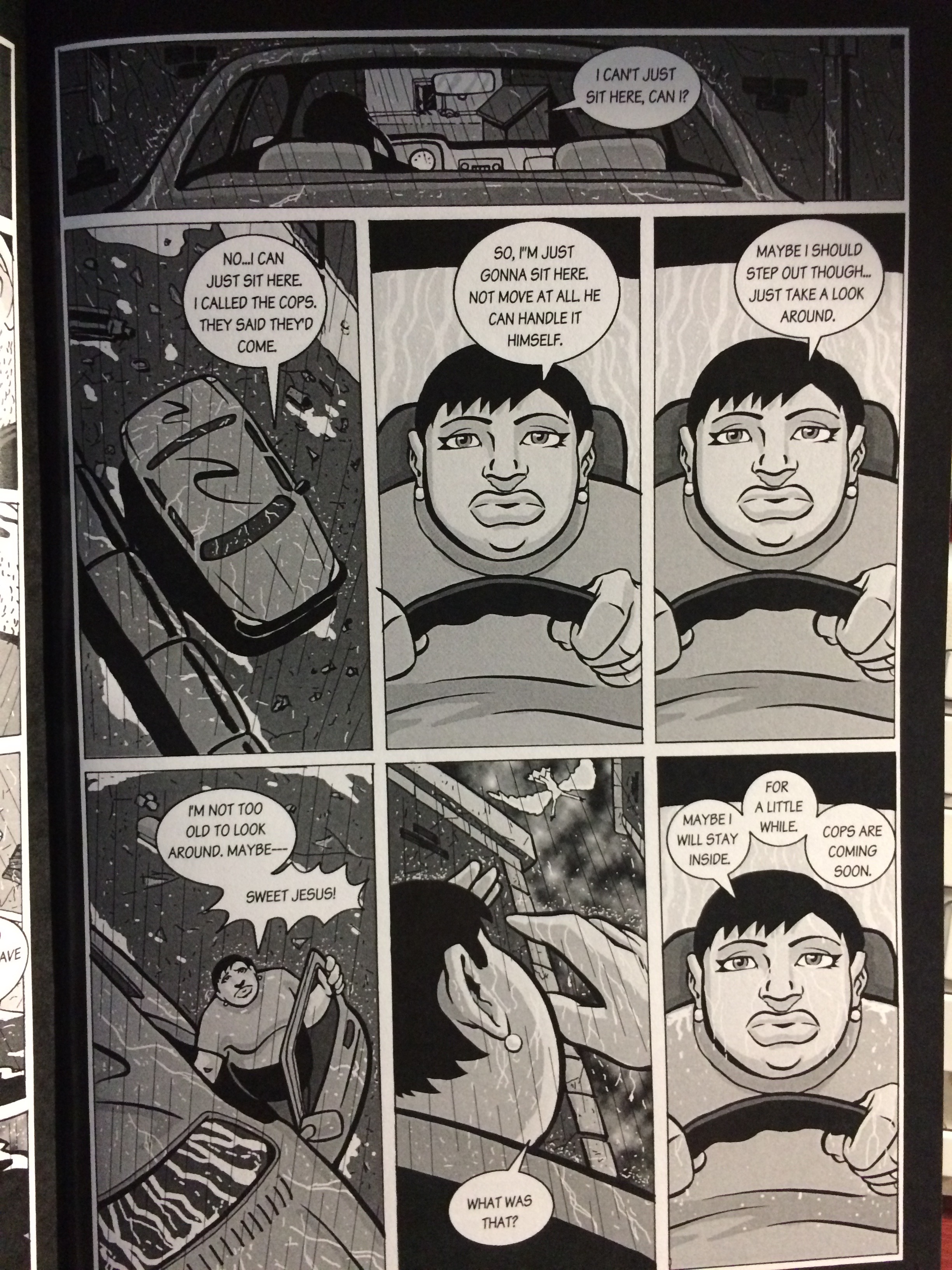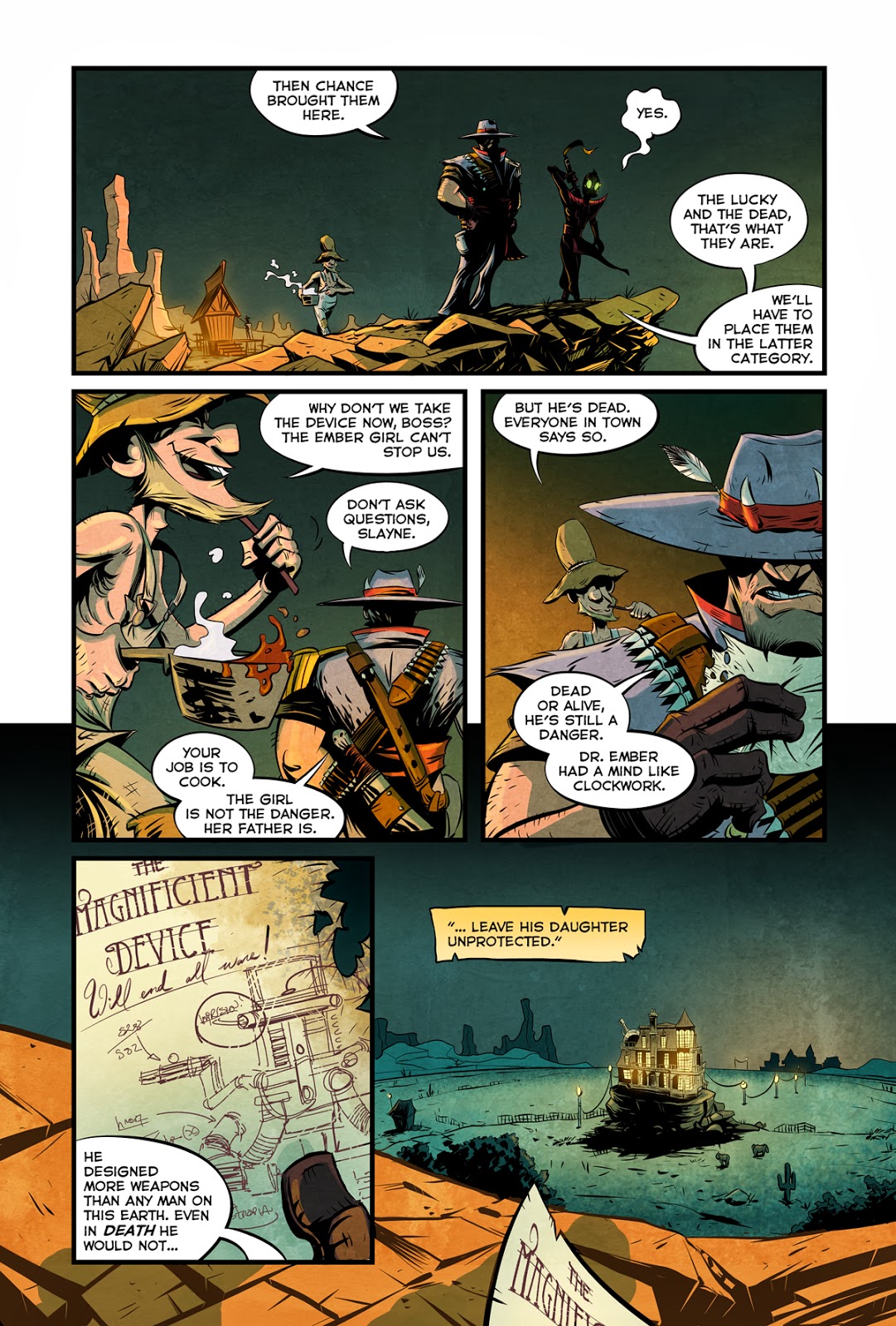The Real Way to Write Comics
By Arthur Slade
 The problem is they're for kids... right? What self respecting adult would be caught reading a comic? What writer would write them? They're not even literary.
The problem is they're for kids... right? What self respecting adult would be caught reading a comic? What writer would write them? They're not even literary.
Times have changed. Yes, many of today's top comic bestsellers have heroes in tights (and heroines wearing even less), fighting the maladjusted villains panel after panel, stopping only to check their hair in a phone booth window. But look a little deeper and you'll discover a cornucopia of well-written stories. Comics are becoming respectable. Comics are literary. Comics are coming of age. Hence the accolades for Art Spiegelman's Maus or Neil Gaiman's The Sandman.
The process for writing a comic is the same as it is for a short story or novel. First you have to have a story. Then you have to write it. But there is one major difference: the story you tell is going to be filtered through the work of an artist. The symbiotic relationship between writer and artist is a constant test of your communication skills. And your main method of communication is through your comic script.
There is no set way to script a comic, in fact there appear to be as many ways as there are writers. Your only goal is to portray the story to the artist so the artist can draw it for your readers.
Scripting styles can be loosely broken down into three types. Some writers prefer plot style scripting. In this style of writing you describe what happens from panel to panel, including action and dialogue. There is an average of 5 panels per page, but you can have as little as 1 panel (called a splash page) or as many as you can realistically fit onto a page (comics rarely go more than 9 panels per page). Character's names are capitalized and dialogue appears in quotation marks. The script is in present tense and explains a detailed story. This detail is very important. You must portray the mood, the expression of the characters, maybe even the way they are standing... so that the artist knows exactly what to draw.
Plot Style:
Super Cow goes into the barn and says, "Hey, who's been messing with my loft?" She has a mean look on her face. Big Bad Billy Goat stubs out a cigarette on the floor, nearly causing a fire, and says, "Me, whattya gonna do about it, Bossy?" They have an udderly stupendous battle.
The second scripting method is the total script. This type of script does exactly as its name implies-- it explains everything to the artist. Each panel is numbered. Captions appear in capitals. The contents of the panel are described in brackets and the dialogue appears at the bottom. It is quite similar to a movie script in structure.
Total Script: PANEL ONE Sarah in her car. She's looking at the front door. Arguing with herself. SARAH: I CAN'T JUST SIT HERE, CAN I? NO... I CAN JUST SIT HERE. I CALLED THE COPS. THEY SAID THEY'D COME. PANEL TWO Sarah in her car. SARAH: SO, I'M JUST GONNA SIT HERE. NOT MOVE AT ALL. HE CAN HANDLE IT HIMSELF.
PANEL THREE Sarah in her car. She's opening the door. SARAH: MAYBE I SHOULD STEP OUT THOUGH... JUST TAKE A LOOK AROUND. I'M NOT TOO OLD TO LOOK AROUND. MAYBE--
PANEL FOUR The Paladin flies across the air. She glimpses it. SARAH: SWEET LORD!
PANEL FIVE The winged creature lands on the warehouse roof. SARAH: WHAT WAS THAT?
PANEL SIX Sarah has now closed the door on the car. Is back inside. SARAH: MAYBE I WILL STAY INSIDE. FOR A LITTLE WHILE. COPS ARE COMING SOON.
(Click on the image below to see a larger version)
The third method of scripting is self explanatory: the sketch/script story. Write your story, sketch it panel by panel (with stick figures if need be), put in all the dialogue and captions, then hand it to the artist (assuming your skills aren't quite up to par).
No matter what script style you use, remember to trust the artist. It is very important to give as much detail as possible, but allow the artist to interpret it in his or her own way. It's a wonderful thing when an artist takes what you have in your head and puts it down on paper. It's even better when the artist refines it to perfection.
There are limitations to how long your story can be. Due to the way a comic is printed, the number of pagesto a comic book are multiples of 8 (as in 8 pages, 16 pages, 24 pages etc.). The norm is either 24 pages or 32 pages. Since a comic usually has a letters page and a few advertisements, your story should be around 21-22 pages long for a 24 page comic or 28-30 pages long for a comic with 32 printed pages.
Comic stories still have all the structural elements of a regular story: the rise in action, the climax, the denouement. In that sense they are no easier to write than short stories or novels. What is difficult is that writers must give believable emotions to super powered beings.

That leads to the most important advice to remember when writing comics: get real! Yes, comics are mostly fantasy superheroes, but the most interesting heroes have a human side to them. Even though Maximum Muscle wears a purple suit and a cape, he still has that little boy inside who was yelled at by his father. He still falls in love. He still feels awkward in social situations. The thirteen year old market is thriving, but there is a core readership of mid-twenties to early forty year olds who want real stories. Remember the Incredible Hulk whose favorite line was "Hulk smash!"? Times have changed. Read the renowned AIDS issue (#420) that deals with homosexuality and the Hulk coming to terms with the fact that his friend is dying of AIDS. If you approach writing comics as creating one dimensional story lines with one dimensional characters, you'll produce flat comics.
And be brief: there isn't much room for your villain to wax on about how his childhood in hell made him the demon he is today. Ideas have to be expressed in the shortest manner possible so the word balloons don't jam up the entire panel, thereby hiding the art work. Comics are the balanced mixture of art and story. Examine your favorite comics and get a feel for how many words to put in each word balloon.
Finally, how do you get in on the ground floor? If you have a favorite comic, study it. Read every issue. Know every character. Write to the editor (whose name and address can usually be found in the front of the comic) and ask about their submission guidelines. The usual submission is a plot line accompanied by a professional letter describing your credits and a short example script. You might get a phone call or a letter saying, "Go ahead, we love your stuff, Kid!" Your best bet is to go with a comic that isn't as popular and needs a bit of re-working.
Other comic book writers are heading down the self publishing route. Find a willing artist who has the same dream. Complete a comic, colour it, letter it, and get it into a distributor's catalogue (example copies are available at any comic shop). With luck and talent you might make money... you might get noticed and either fly solo or be picked up by one of the bigger comic book publishers. An even cheaper solution is mini-comics; comics that have been photocopied, stapled and sold to your friends and local comic shops. Don't frown, it's a beginning... and many talented artists do mini-comics for the pleasure of creating.
And isn't that what we're in this writing business for?
Tools I have used for writing comics:
Scrivener: My favourite writing program also has a comic script!
Comic Life 3: This is a program for Mac that easily adds balloons to images. It was very helpful to use this to do a mock up of the balloon layout.
comic art courtesy Derek Mah & Christopher Steininger
Extra: Another example of a script. This is taken from the graphic novel Modo: Ember's End Just click on the image below to see a larger version of the page. Click again for the super large version.
PAGE <10>
PANEL <1>
A view of the town. Ogden is looking down on it. From this distance we can see the house of Ember which is a short distance from town, on top of a big rock. Which is where Annette lives, just outside the town. This is the description from later on in the book: It is a building on a tall, series of rocks that overlooks a ranch and overlooks the town. There are circular steps leading up to it. There are cows wandering around below it. The house is a mansion of sorts, with many windows and at the top is an observatory dome. It also has weather vanes that collect electricity. A house that a mad tinkerer, scientist would build. A pneumatic tube runs to the house, strung along a row of lamps that lead down to the town.
OGDEN BULL
Then chance brought them here.
KATASHI
Yes.
OGDEN BULL
The lucky and the dead, that's what they are. We'll have to place them in the latter category.
PANEL <2>
Similar scene. Odgen is looking at a burnt piece of paper.
SLAYNE
Why don't we just take the device now, boss? The Ember girl don't have any protection.
OGDEN BULL
Don't ask questions, Slayne. I pay you to carry things and to cook.
(Cont)
The girl is not the danger. Her father is.
PANEL <3>
Slayne is testing the beans.
SLAYNE
But he's dead. Everyone in town says so.
OGDEN BULL
I knew him when he was alive. Dr. Ebenezer Ember had a mind like clockwork.
PANEL <4>
Ogden shows us a view of the paper. It is partly burnt, but clearly shows half of a mechanical device that has Gatlin guns for arms and some sort of electrical firing device. The rest is burnt. But written along the side in Dr. Ember's handwriting is The Magnificent Device. Then scribbled: Will end all wars!
OGDEN BULL
He designed more weapons than any man on this earth. Even in death, he would not...
PANEL <5>
View of Ogden who is now looking at the Ember house outside of town. We are looking over his shoulder, so to speak. On one side we see the piece of paper. Over his other shoulder we see the house.
OGDEN BULL
...leave his daughter unprotected.

